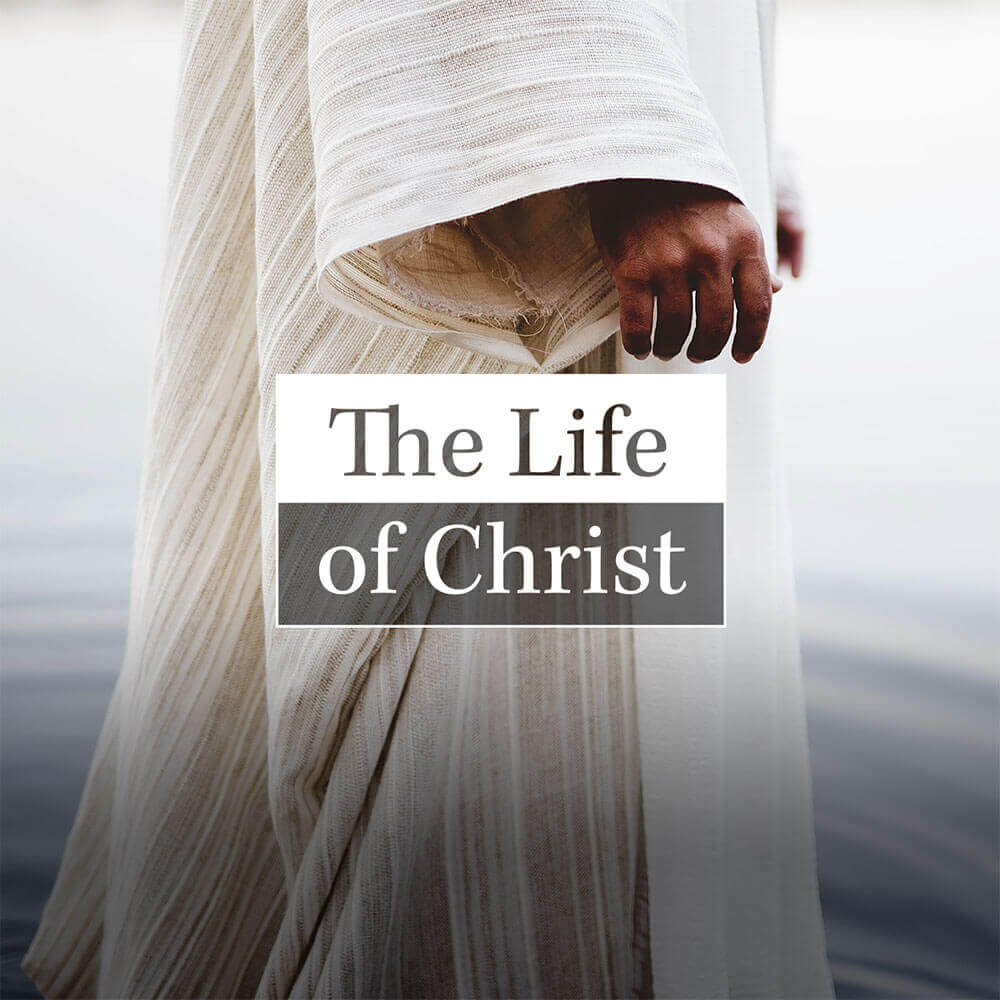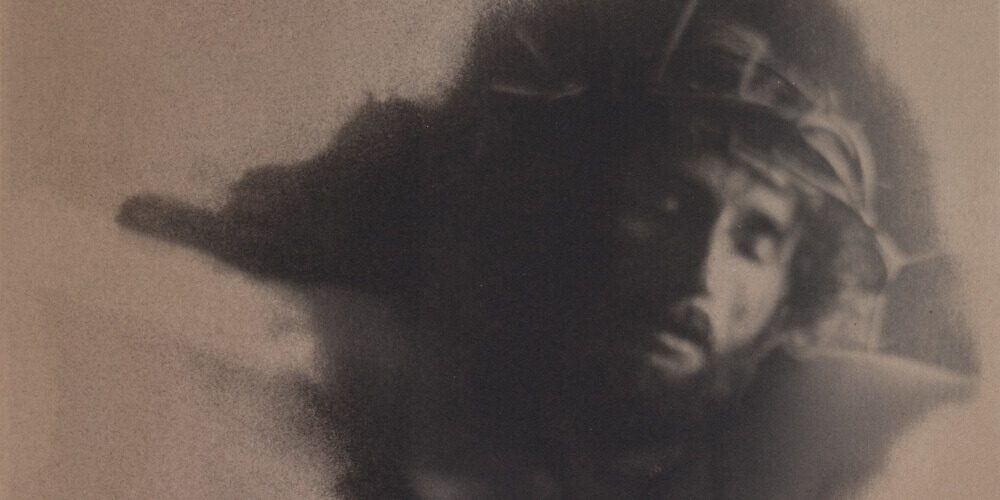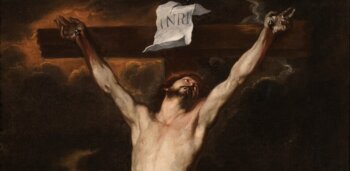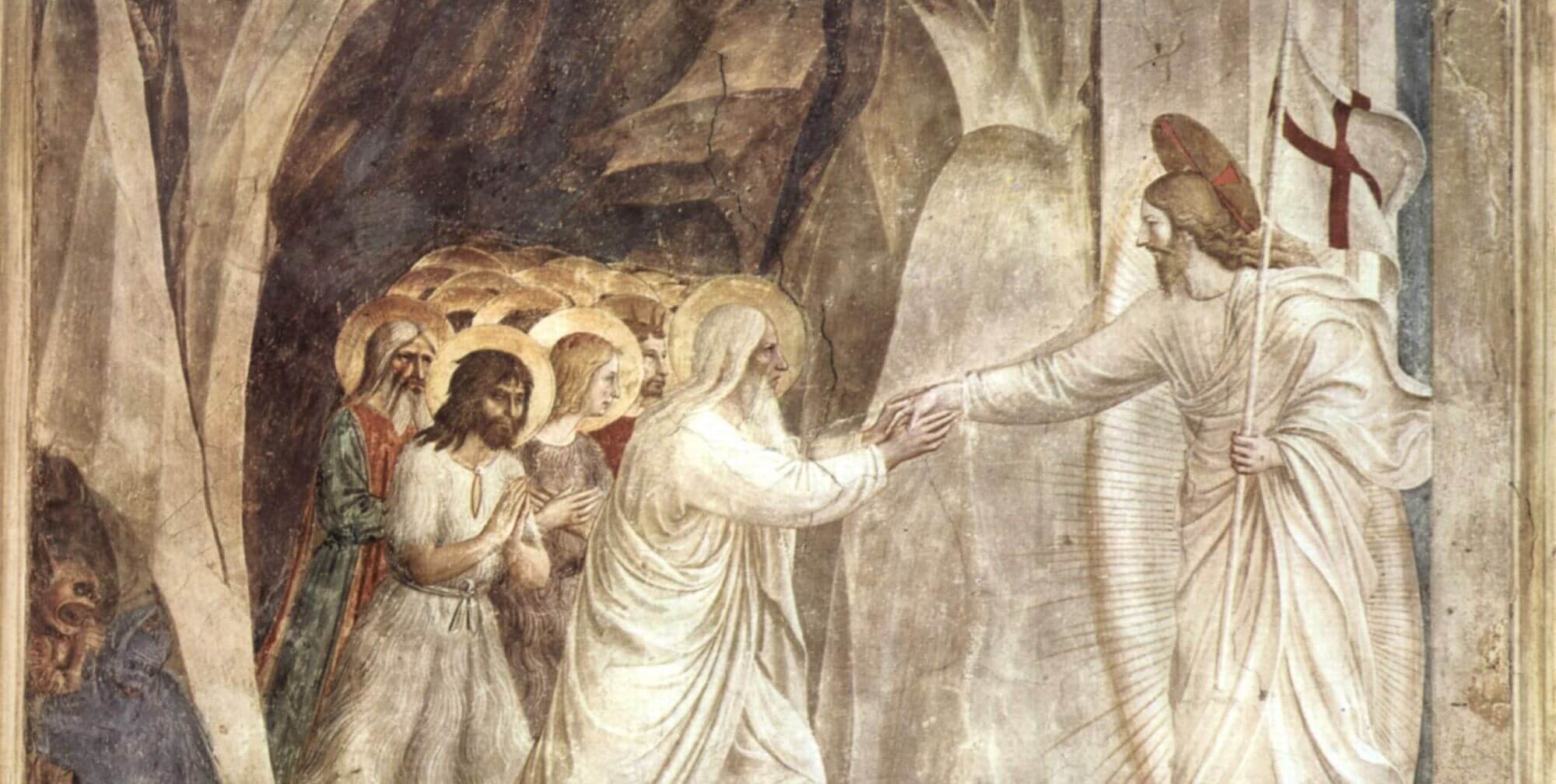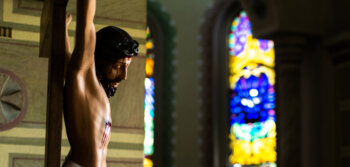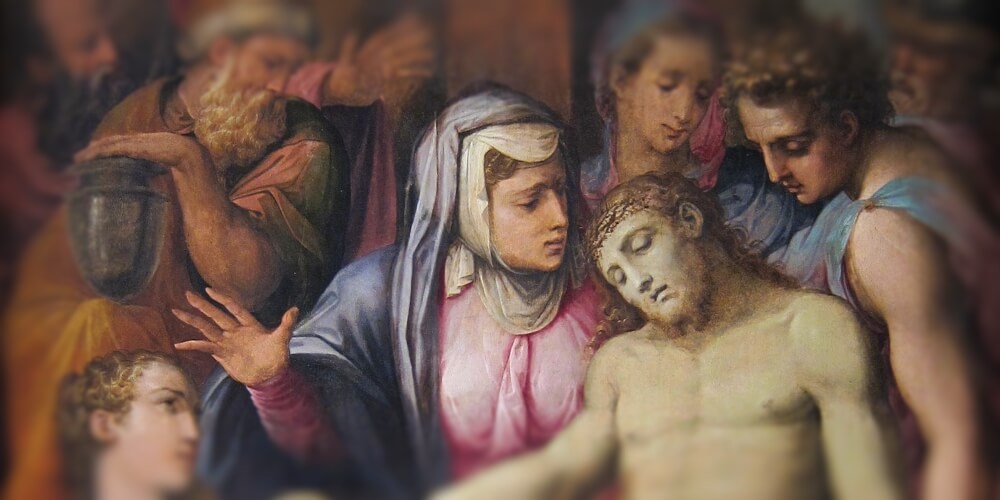
Holy Week. The German people call it “the week of lamentations.”
From Palm Sunday to Holy Saturday, the days preceding Easter have been named the “Great Week” and are regarded as the most sacred in the Christian calendar. Such a momentous occasion brings with it special pious meditations, holy liturgical ceremonies, and remarkable ancient customs all directed towards examining the final hours of Our Lord before His death.
As a result, Holy Mother Church has bidden the faithful to revisit this sorrowful event annually and to take advantage of the many avenues it offers—whether by spiritual contemplations or physical reminders—in order to grow closer to our Savior.
How the Passion Narrative Became Dramatized…
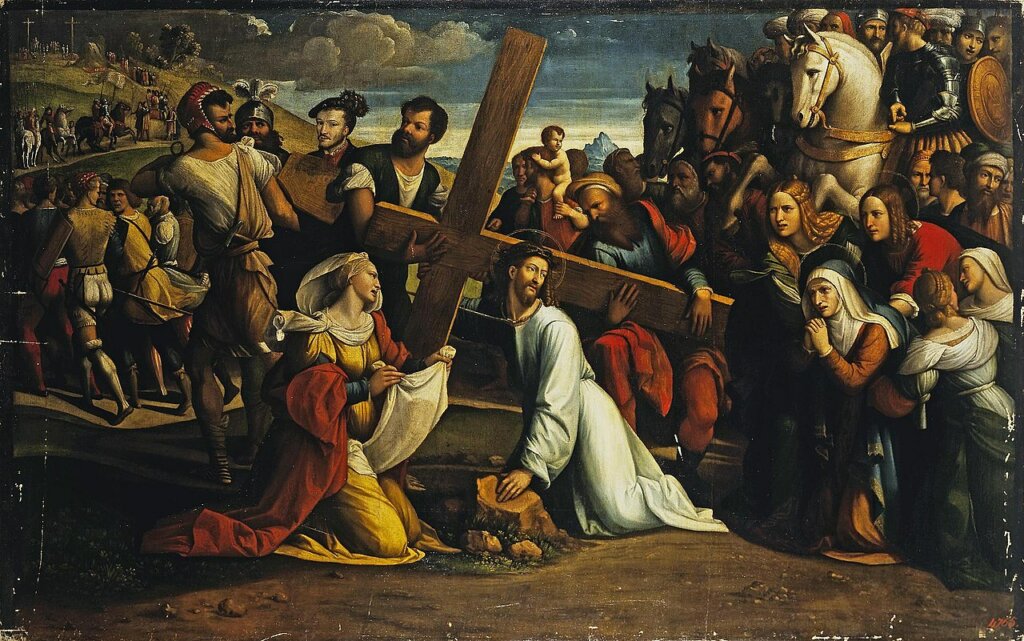
The season of Lent, especially during Holy Week, is a time of spiritual reflection and holy contemplation. The Church beckons us to focus our attention on the sufferings of the God-Man and to accompany Christ in His bitter quest to reclaim our salvation.
Unsurprisingly, the events surrounding the end of Our Lord’s earthly life lend themselves well to art, especially drama, because His passion was itself dramatic. His was the great drama! It captures our attention in its physical qualities since the trial, torture, and execution of Jesus were certainly unique, but it also commands recognition for its spiritual significance as He exemplified the greatest love while satisfying divine justice and mercy.
What we have received from the four gospels and sacred tradition regarding this great drama emphasizes the hallmarks of a compelling and touching story. St. Matthew tells us: “All these things Jesus spoke in parables to the multitudes: and without parables he did not speak to them.”
The Word Made Flesh conveyed Truth through parables—stories. Is it little wonder then, that the story of His life and death would become the greatest story ever told? Just as the Messiah taught by intriguing us with stories, so also the story of His life and death moves us by enchantment. It is striking to those who are unfamiliar with Our Lord’s journey and edifying to those already familiar with it.
Many Protestant denominations recognize the events of Christ’s passion and death as noteworthy, but it is the Catholic Church that has placed special emphasis on recounting the drama of the suffering Christ—and Catholics have done so in many wonderful ways.
Centered around the sufferings and sacrifice of Our Savior, man’s innate desire for creativity has found sanctification in the arts. The journey of the Holy Victim has proven to be a timeless topic in Christian art, from paintings, plays, and architecture to literature, music, and sculptures. Film, too, has more recently produced an abundance of Christ-centered features. Clearly, then, the work of bringing a seemingly remote and ancient, yet unquestionably poignant and pivotal event to the forefront of our minds has been a great devotion of the Church since its earliest days.
Where Did the Stations of the Cross Come From?

One of the most common practices during the Fridays of Lent are the Stations of the Cross. Although they wouldn’t be established in their current form until the 16th century, the initial concept and practice behind them is believed to date back to Mary and the Apostles after the Ascension.
How did the Stations of the Cross devotion come about?
Calling to mind the incredible sufferings of Our Lord on our behalf, the servants of Christ would prayerfully visit the great landmarks in the Holy Land associated with the various stages of His course from the Mount of Olives to the empty tomb.
Later, fourteen official stops or “stations” were constructed along the route, starting with the Praetorium where he was sentenced to death.
When Christianity spread across the world and far-off believers couldn’t physically undertake a pilgrimage to the Via Dolorosa or “Sorrowful Way” every year, the practice of retracing the steps of the Lamb of God spiritually through prayer and devotion was substituted. Thanks to the efforts of the Franciscans and St. Alphonsus Ligouri, we now cherish the Way of the Cross as we know it today.
The Holy Week Tradition of Semana Santa
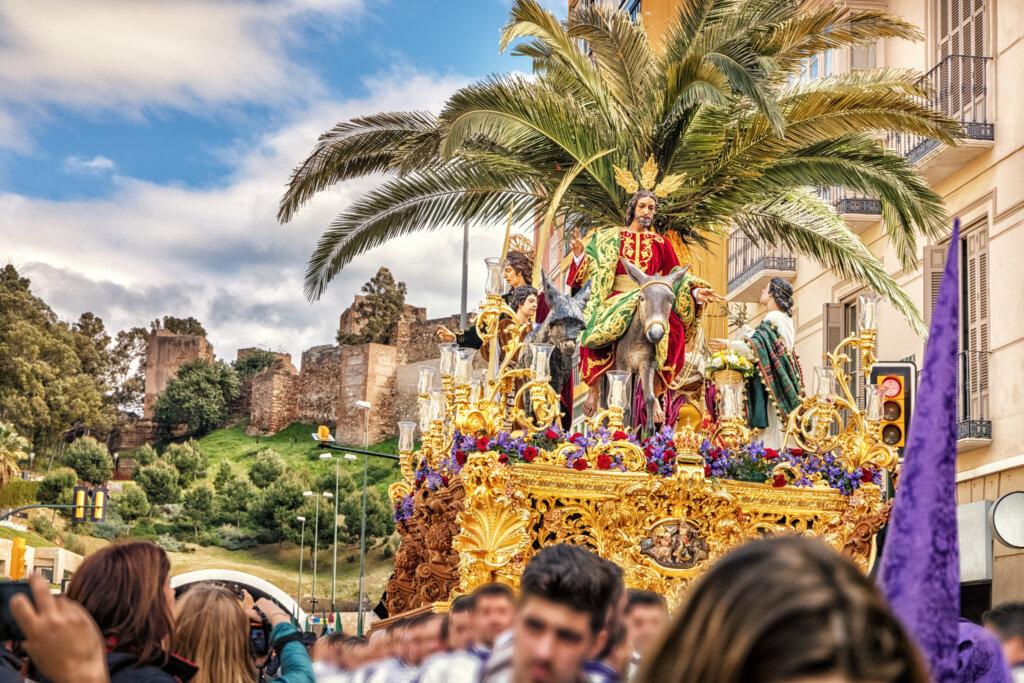
While there is very little stagecraft connected to the stations, there remains a quietly powerful element to publicly recalling the Great Drama. Honored with lit candles, reverent processions, and brief hymns, the spirit of the practice still retains a somber aura as it emphasizes the necessity for reparation and repentance for our sins while encouraging a desire to unite our sufferings to His through self-mortification.
This sanctified ritual was not only practiced by Catholics in churches, but was often carried out with fervor in the streets as seen in the widespread cortèges in Spain and Mexico.
The Holy Week traditions of Semana Santa in both countries are very similar, while differing slightly according to the unique customs and characteristics of each town. Like the Stations, the Semana Santa celebrations can also be traced back to the 1500s.
They are often described as a joyful and even glamorous event, yet the parades contain a certain penitential flavor and can be held from Palm Sunday until Easter morning and beyond, according to the city where it is taking place.
The parishes of the region form processions that journey throughout the countryside carrying elaborately crafted pasos or floats. These floats are painted wooden statues, exquisitely adorned with flowers, candles, and other decorations, depicting scenes from the Stations of the Cross or other events from the Passion of Christ. The pasos are carried on the shoulders of the confradia or brotherhoods, often for hours, to recreate the sufferings God endured and to embrace their own penances.
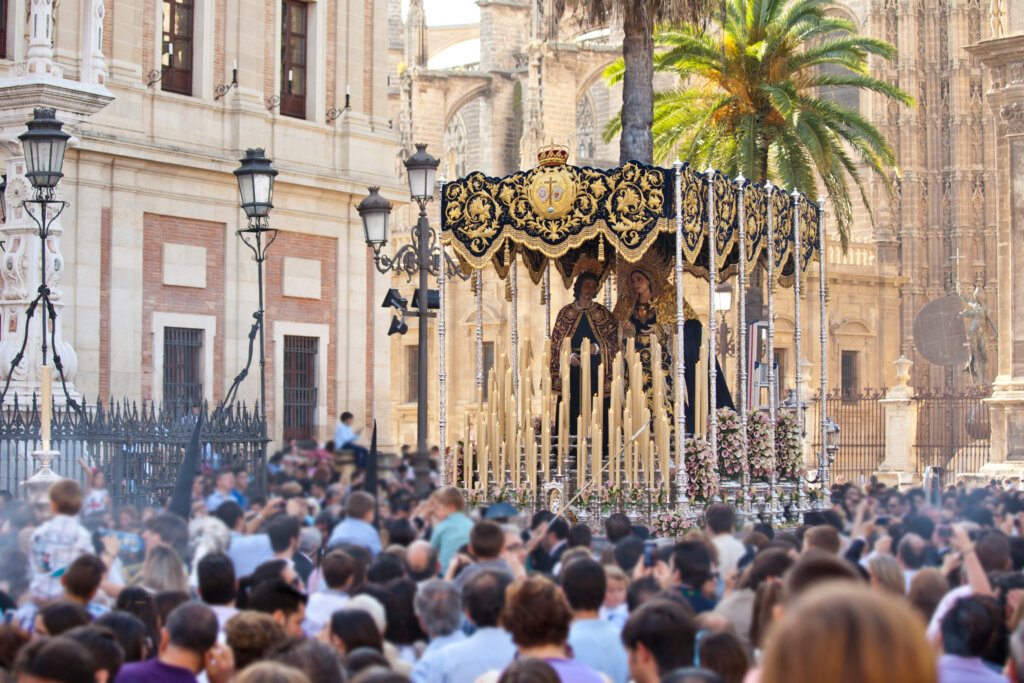
These confradia are Catholic fraternities or associations stemming from local parishes in the middle-ages.
Some members of the confradia wear conspicuous attire called nazarenos or penitential robes. These robes are paired with a face covering or capirote to conceal the identities of the participants. The masks are then completed with a tall conical cap.
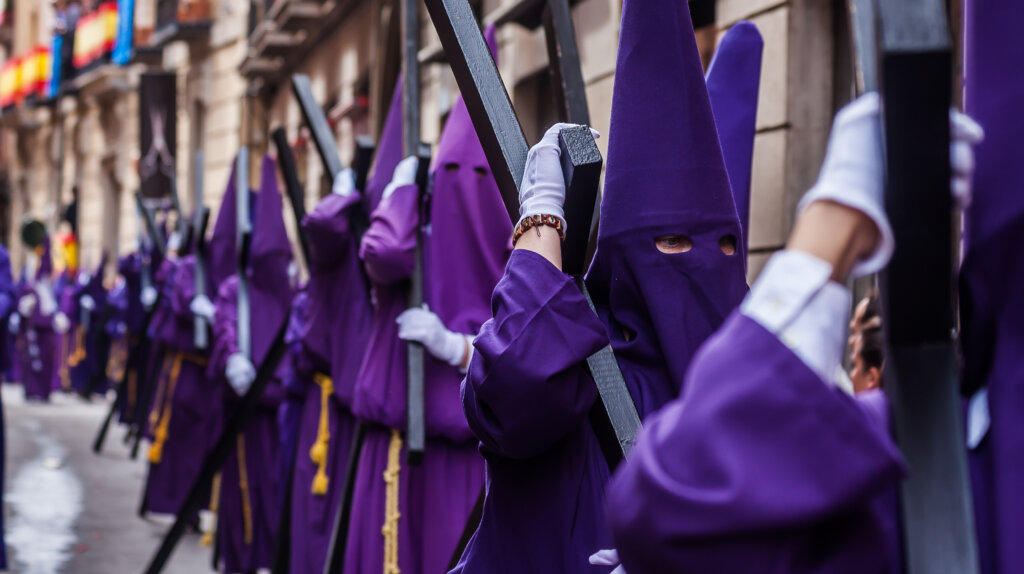
At first glance this strange attire may call to mind the Ku Klux Klan, but it is important to note that the garb of these penitents in procession has no historical connection with the KKK, and it is part of a much older—and entirely different—practice dating back to the 1500s when sinners performed public acts of reparation. The tunic marks its wearer as one in need of forgiveness; the hood allows the penitent to preserve his anonymity (think of how the traditional confessional grants anonymity to protect the identity of the penitent); and finally, the pointed headpiece rises towards heaven from whence all mercy flows.
These singular processions sometimes feature musical accompaniment, but the overall atmosphere of both the Stations of the Cross and the Semana Santa gatherings is one of self-examination and quiet veneration.
The Passion Play: Liturgical and Secular Performances
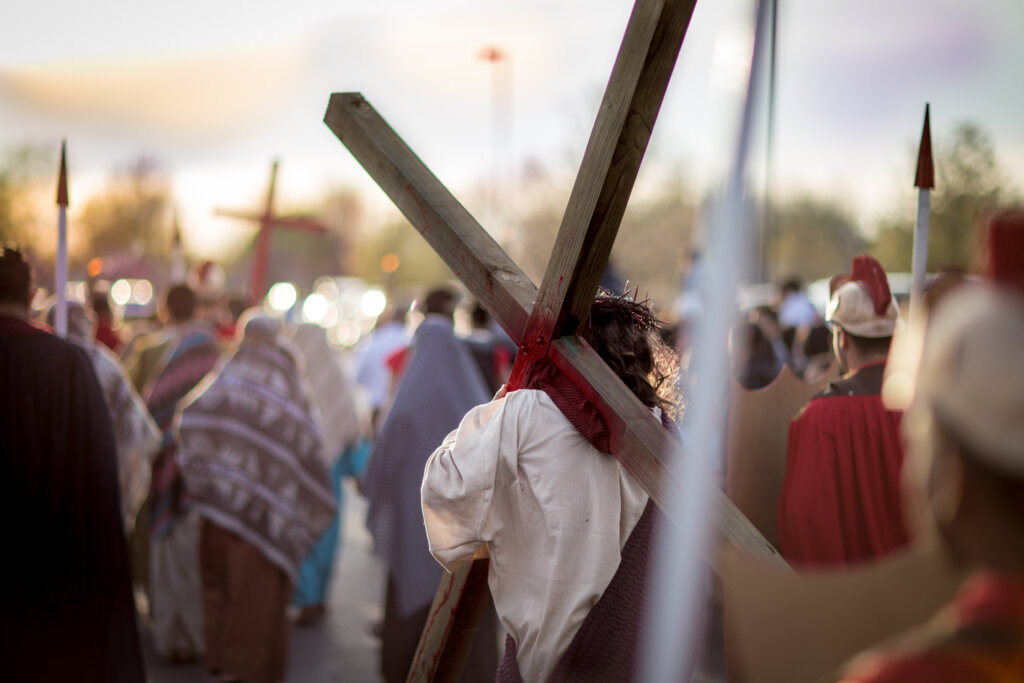
All are invited to join in these religious practices and except, perhaps, for the leadership from the clergy in these commemorations, no one stands out from the assembly. The focus remains on Christ alone.
Yet, like every good story, the Great Drama sees moments of peace and moments of outcry. The journey moves back and forth between sobering silence and arresting action. The Church recognizes the fact that revisiting the mission of God during His time on earth cannot be relegated to the hushed corners of marble sanctuaries. A drama by its nature requires theatricality. A drama must be performed.
Catholicism reinforced this notion with the liturgies thatportray Christ’s journey to Calvary within the Mass itself. Since the reading of the holy gospels formed part of the rite of worship, it was only natural to select the accounts relating to Our Savior’s last mortal days. Stemming from the Latin word pati, “to suffer,” these texts came to be known as the Passion.
While the Passion narratives were likely read publicly during Holy Week Masses in earlier days, Pope Leo the Great was the first pontiff to specify that it be spoken aloud on Palm Sunday from St. Matthew’s version and on Good Friday from St. John’s narrative. By the 8th century, music found its way into the sacred celebrations and Gregorian chant was utilized for the gospels.
Later on, in the 1200s, the chant was divided into three separate yet complementary parts. The singers—usually a deacon, sub-deacon, and priest—were assigned one of the “voices,” such as the crowd and other speaking characters, or Jesus. The one who chanted Jesus’ dialogue was given the lowest register, the crowd would sing in higher notes, and the narrator would chant in between the two.
This mode of re-experiencing the death of the Son of God would remain the standard in the Roman Catholic Church until the aftermath of the second Vatican Council (and the confusion that resulted from poor interpretation of the Council documents).
Unlike the Stations and the Hispanic processions, character roles are assigned in the sung Passion of Holy Week; music plays an integral part of the portrayal; and the story of Christ is brought directly before the congregation in a physical manner.
As time went on, these rich religious practices began to inform and influence secular life. For instance, the presentation of the Passion at Mass inspired the Passion Plays of the Middle Ages. The stage easily received the sufferings of the Savior and produced renditions unique to the arts of the theater.
Springing directly from the liturgical accounts, the plays were first performed in Latin before changing to the vernacular in order to reach people who were less learned. These plays proved to be most popular, having a lasting impact even to this very day.
While re-enactments of this kind sprung up all over the globe, the Mystery Plays in medieval Britain saw particular success. The Passion plays in York, England, were the main event of the biblical dramas. Theatrical renditions were performed by guild members and each story was told by a specific trade. Bakers, for example, put on a show of the Last Supper; sheep-shearers led the Way of the Cross; Nailers, the Crucifixion; Butchers, the death and burial. Carpenters, of course, were assigned the honor of depicting the Resurrection scene.
A great deal of importance was placed upon the excellence of the divine dramas, and it gave rise to hearty competition amongst various cities. In the artisans’ efforts to outdo each other, their performances quickly grew into an exhibition of the arts and a display of skill by the local craftsmen from village to village.
Sadly, this tradition of playmaking and celebration of the life of Christ would all but disappear with the passage of time and the disintegration of culture.
However, there is one play worth special mention that has weathered the ages in the little town of Oberammergau in Bavaria, Germany.
The Oberammergau Passion Play
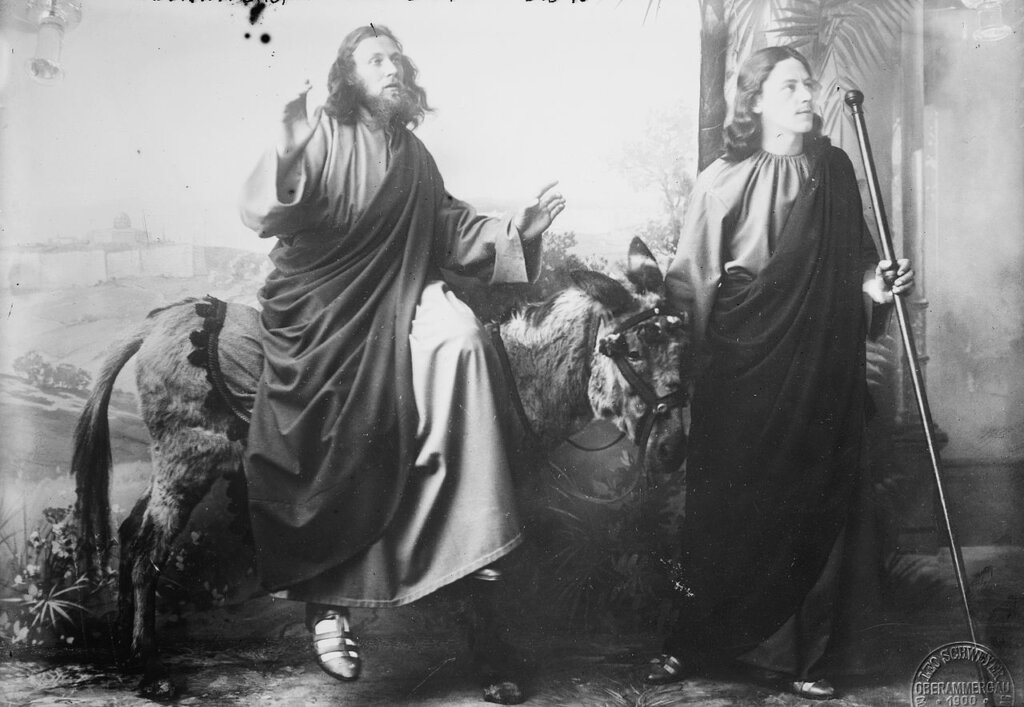
During the Thirty Year’s War, the black death swept across Europe, claiming many lives. In 1633 the plague reached Oberammergau, leaving devastation in its wake.
Imploring the mercy of Almighty God, the Oberammergau townsfolk solemnly promised that if their lives would be spared, they would stage a biblical drama every decade centered on the life, death, and resurrection of Our Lord.
The plague did not disappear quickly, but the citizens of Oberammergau suffered no more deaths after making their vow.
The following year, the people officially presented their first Passion Play.
It is the longest running theatrical performance in the world. Although the scripts have changed and certain aspects have been modified, every ten years sees a performance of the Oberammergau Passion Play.
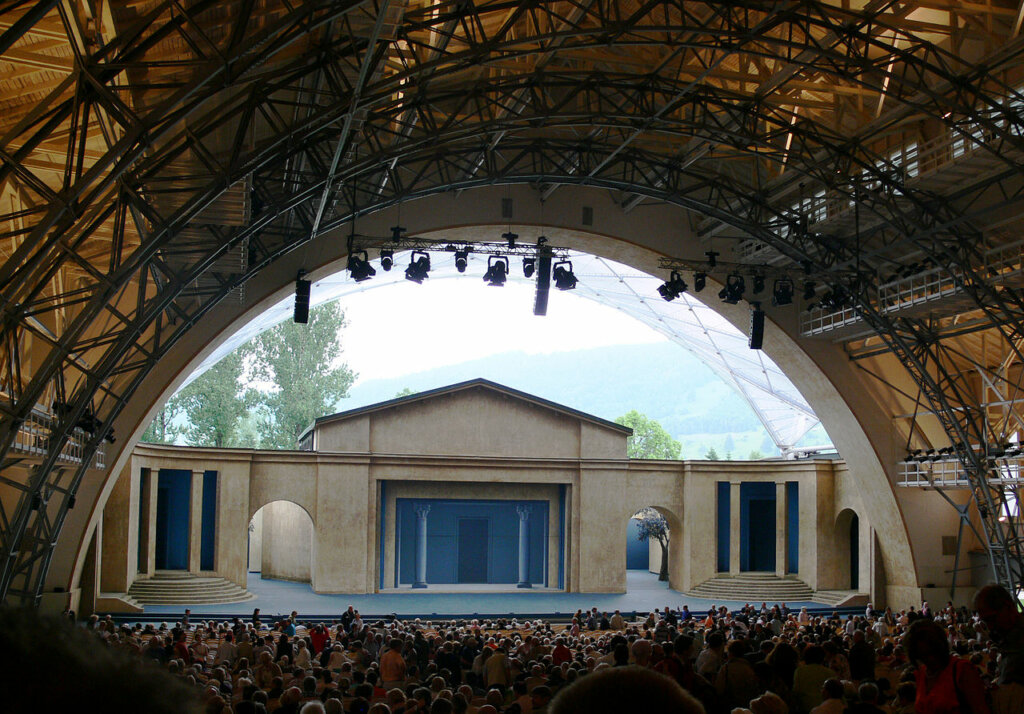
(Photo credit: Andreas Praefcke/CC BY-SA 3.0)
Boasting thousands of cast and crew members, the shows draw an audience in the hundreds of thousands from every corner of the world. The latest production took place in 2022.
Whether remembered in pious devotions or theatrical performances, the drama of Christ is perennially relevant to man. The sufferings of Jesus give us hope, for they illustrate how much Our Lord cherishes us.
If this profound story ended in death, of course, it would be an unbearable narrative. Providentially, the Great Drama has a happy ending.
Christ is not conquered by death but overcomes it, so that death might not conquer us, so that for us death might have no sting.
Perhaps this is partly why we revisit the dramatic scene of the Crucifixion every Lent. Story and song awaken us to its hidden sweetness.
It is in this moment, on the stage of life, that we can again choose to embrace the Cross of Christ, so that our hope in His resurrection might be renewed…so that we may one day share in the glorious finale of His victory in the joys of heaven.
Feature image: Pieta by Giorgio Vasari. US:PD.

